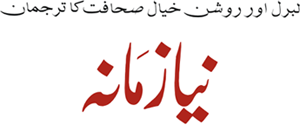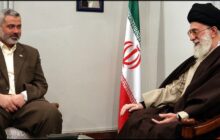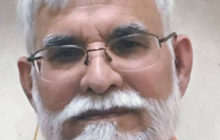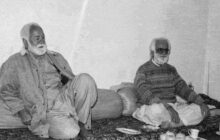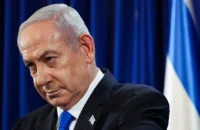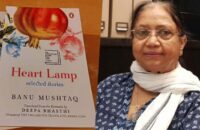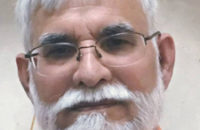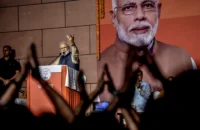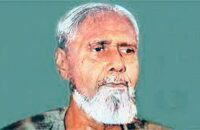The Paris-based 39-member Financial Action Task Force (FATF), against money-laundering and terror-funding, strongly urged Pakistan last month to comply with its demands by February 2020 or face being included in the FATF “black list” meaning sanctions. It said: “To date, Pakistan has only largely addressed five of the 27 action items, with varying levels of progress made on the rest of the action plan.”
Pakistan has been on the “grey list” of FATF because of its many “nonstate actors” used in proxy wars belonged to other states like Afghanistan, Uzbekistan and China. China is heading the FATF these days through Xiangmin Liu of the People’s Bank of China now made president of FATF. It’s not only Afghanistan and Uzbekistan that complain about Pakistan keeping their terrorists on its territory; China too is a complainant. In 2017, it got together with Brazil, Russia, India and South Africa to in the trading bloc called BRICS to express “joint concern” about Pakistan-based terrorists listed as “Eastern Turkistan Islamic Movement, Islamic Movement of Uzbekistan, Haqqani Network, Lashkar-e-Tayba, Jaish-e-Muhammad, Tehreek Taliban Pakistan, and Hizbut Tahrir”.
Pakistan has had to act on FATF’s directions because of China. It can’t afford to offend China and knows it has not been very mindful of the Uighur Muslims from Chinese Xinjiang on its soil doing crossborder terrorism. Pakistan has therefore put the leaders of the major terrorist organisations under house-arrest and taken over their madrasas where hundreds of thousands of young men learn how to become “pious warriors” in the service of Islam. Much of this takeover is credible but a lot more remains to be done, as FATF observed; although it remains doubtful if Pakistan can run the madrasas competently when its own schools are in a bad shape.
Andrew Small in his book The China-Pakistan Axis: Asia’s New Geopolitics (2015) revealed that the Red Mosque of Islamabad was attacked by Pakistani commandos in 2007 after China warned that the mosque, a watering hole of Al Qaeda and its affiliated terrorists right in the heart of the capital city, was sheltering Uighurs from China who had attacked and captured some Chinese working in a massage parlour in Islamabad. When the assault on the mosque was over, 14 Uighur terrorists were found among the dead. No one in Pakistan got to know that the attack on the mosque was triggered by a Chinese protest.
Ahmed Rashid in “Pakistan on the Brink” (2012), third book of his trilogy on the same subject, observed: “China now faces the threat of Islamic militancy. Chinese Muslims, or Uighurs, from Xingjian have long journeyed to Pakistan to trade and to perform hajj in Saudi Arabia along a route that that was part of the ancient Silk Road. But in the 1980s, Uighurs went to study in Pakistani madrasas and then went on to fight the Soviets Afghanistan. Now some are fighting along with the Taliban. Uighur nationalism is becoming much stronger in Chinese Xinjiang but the greater fear is that Uighur Islamic extremism will grow; it is still a minor threat, but China blames Islamic groups for unrest in its eastern province.”
China is most upset over the East Turkistan Islamic Movement (ETIM) – declared a terrorist organisation in 2002 by the UN – and got in October 2003 the Pakistan Army to kill ETIM leader Hasan Mahsum, and in January 2010, his successor, Abdul Haq Turkistani – the last by a US drone attack- both in Pakistan’s tribal area, FATA. An earlier outfit not ousted by Pakistan is The Islamic Movement of Uzbekistan that grew into a pan-Central Asian group and was ensconced in FATA recruiting Uighurs into terrorism. Then another group upset China. This was the Turkistan Islamic Party, in September 2011, claiming responsibility for some attacks in Chinese Xinjiang.
In 2009, Al Qaeda in Pakistan too started attacking inside China. It called for attacks on Chinese interests after riots in Urumqi left 200 Han Chinese Uighurs dead. After that, one couldn’t blame China for getting alarmed by the shadowy Uighur warriors taking refuge in FATA. The Pakistani military intelligence, the ISI, has regularly informed the Chinese about Uighurs operating out of Pakistan, which has helped its Chinese counterpart in facing off the attacks. The ISI finally captured and extradited to China 14 Uighurs in 1997, seven in 2002, nine in 2009, and five in 2011, “including a woman and two children”.
In July 2011, the Uighurs attacked a police station in Hotan – or Khotan – inside China, killing 20, and thus leading China Daily of August 2, 2011, to reveal the attackers had taken their training at some ETIM camps in Pakistan. Ahmed writes: “This prompted ISI chief General Pasha to rush to Beijing, where he reassured the Chinese that Pakistan would counter the ETIM”. During 2011, China also demanded the return of Uighurs settled in Malaysia, Thailand, Cambodia, Nepal, d Kazakhstan.
